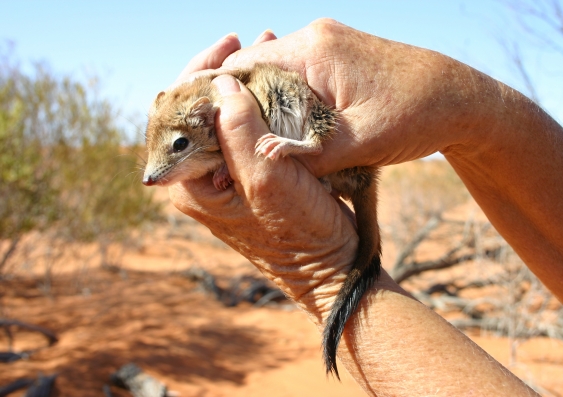Locally extinct mammals return to NSW’s far west
A UNSW Sydney project has received funding to re-establish locally extinct native mammals beyond small fenced safe havens.
UNSW researchers have received more than $500,000 from the NSW Environmental Trust to reintroduce native species in Sturt National Park in the state’s far north-west.
The Beyond Fencing project aims to reintroduce four locally extinct species – the greater bilby, burrowing bettong, western quoll and crest-tailed mulgara – in a 100 square kilometre fenced area with low levels of predators.
The project builds on earlier work by UNSW academics and complements the nearby project Wild Deserts, also in Sturt National Park. Wild Deserts will reintroduce the four threatened species into two 20 square kilometre ‘exclosures’ without any foxes or cats. Once breeding populations are established, some mammals will be moved to the adjacent Wild Training Zone for the Beyond Fencing project.
UNSW’s Beyond Fencing project is led by Professor Richard Kingsford, Director of the Centre for Ecosystem Science UNSW and Dr Reece Pedler, Coordinator of the Wild Deserts Project UNSW.
Prof. Kingsford said that both projects are important in restoring the local ecosystem.
“Beyond Fencing will re-establish locally extinct threatened species and provide insights into how they persist alongside low level of cats and foxes. It will give us vital data on which methods are most successful in reducing feral cat and fox numbers and sustaining lower densities over long periods,” Prof. Kingsford said.
Dr Pedler said that Beyond Fencing will take a two-pronged approach to improving the plight of threatened small mammals.
“We aim to reduce the impact of feral predators using innovative predator control techniques, as well as improving the anti-predator responses of locally extinct mammals to feral cats and foxes. This work is at the cutting edge and is a step along the road to one day re-establish locally extinct mammals outside of fenced reserves on mainland Australia,” Dr Pedler said.
“To do this we need to breed smarter bilbies – ones that know what a feral cat is and how to escape from them.”
The Wild Deserts project is part of Reintroducing locally extinct mammals, a collaborative effort between UNSW, Ecological Horizons and NSW National Parks and Wildlife Service that uses feral predator fencing to safely reintroduce threatened species in arid New South Wales.

